As I am checking over and deep cleaning the SB2 on the Sunday morning after having received it, I make a little discovery…
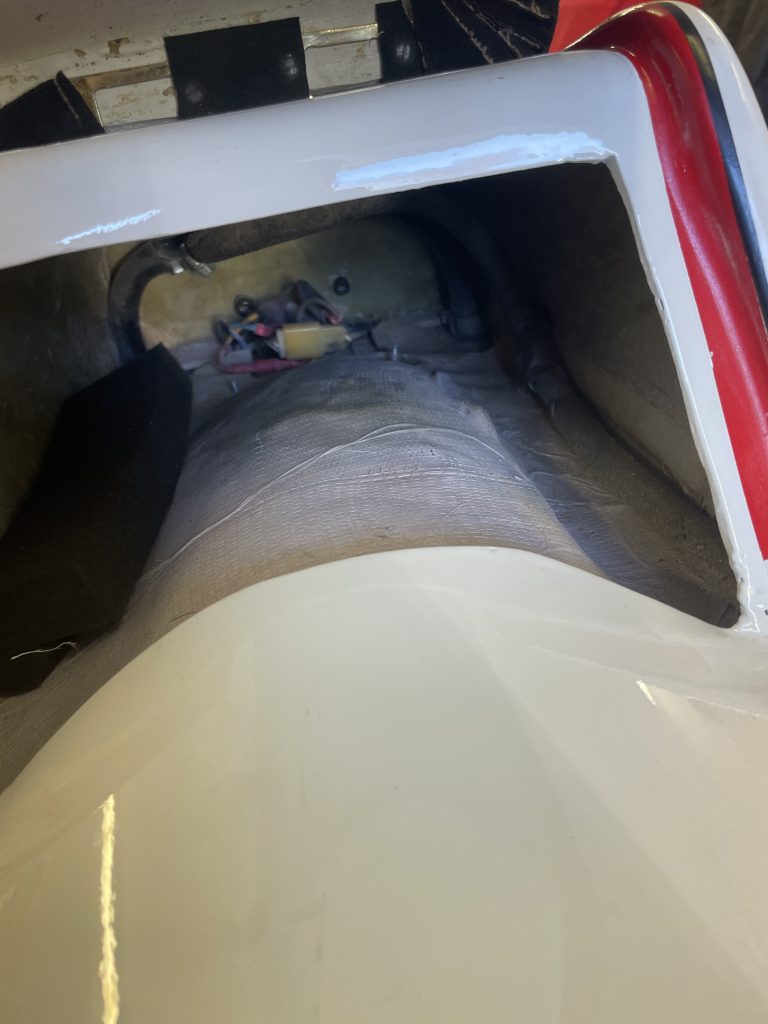
In the rear tail, things look a little odd and not what one would expect of a factory finish with an unusual array of pipes…my first thought was, why are there water pipes back there? It’s air cooled! Then I wonder if it’s housing the loom for the indicators…I also note that the base of the tail is not as thick as the rest of the fibreglass. It appears to have been moulded around the shape of the wheel and it is very thin, I can flex it with my hand, it’s clearly been modified as the lay up is of a different type to the rest of it. I’m thinking to myself, well that’s one job I’m going to need to get sorted, having the tail section reinforced…
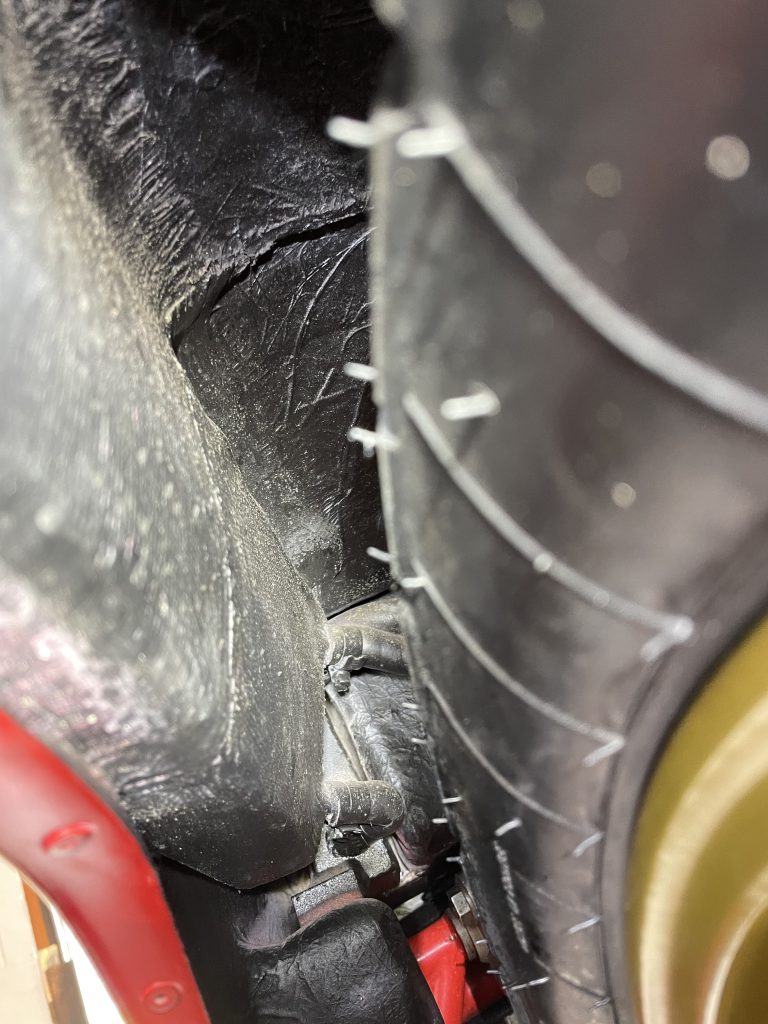
I then check out the underneath of the arch, and this is where I make a discovery that resonates with an article I had read while researching as much information as possible regarding all things SB2.
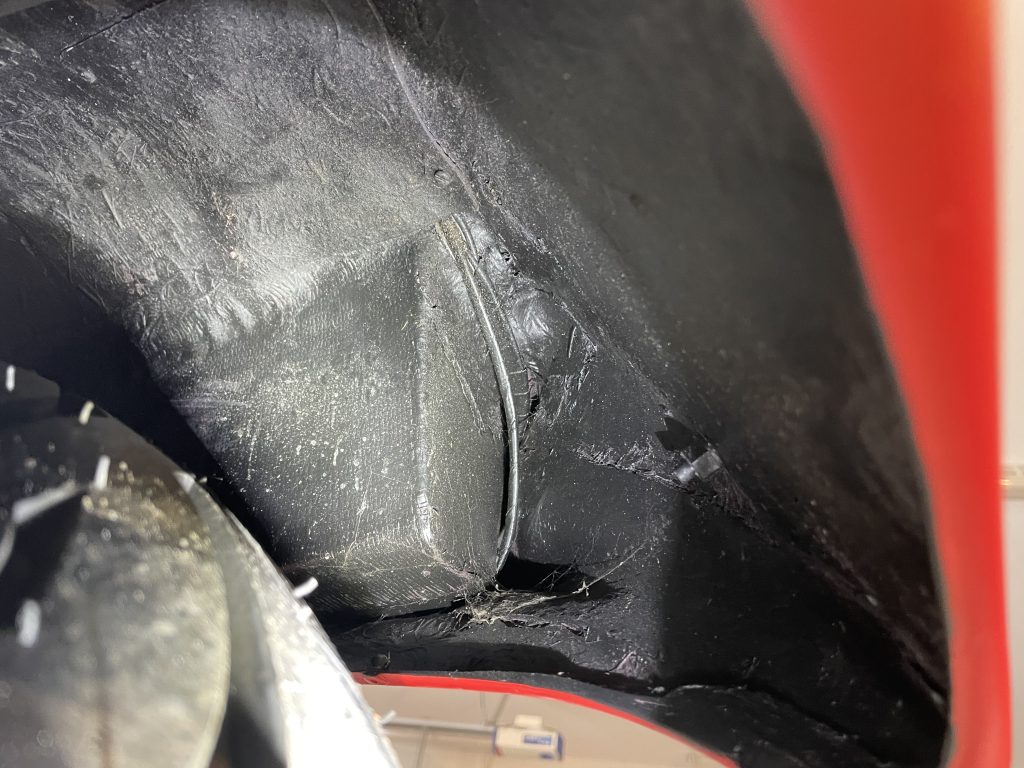
There are what appear to be auxiliary fuel tanks neatly grafted into each side of the rear tail, connected with fuel pipes to the main tank and to each other via balance pipes.
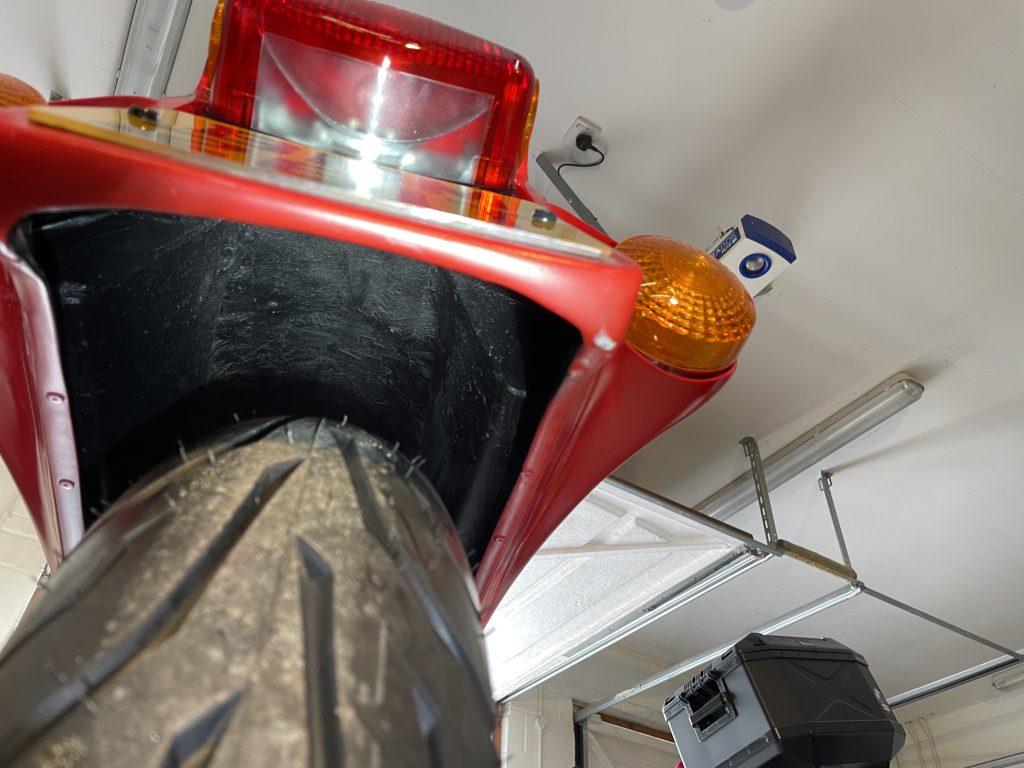
This now explains what the pipes are for in the rear tail. It’s a balance pipe between the fuel tanks.
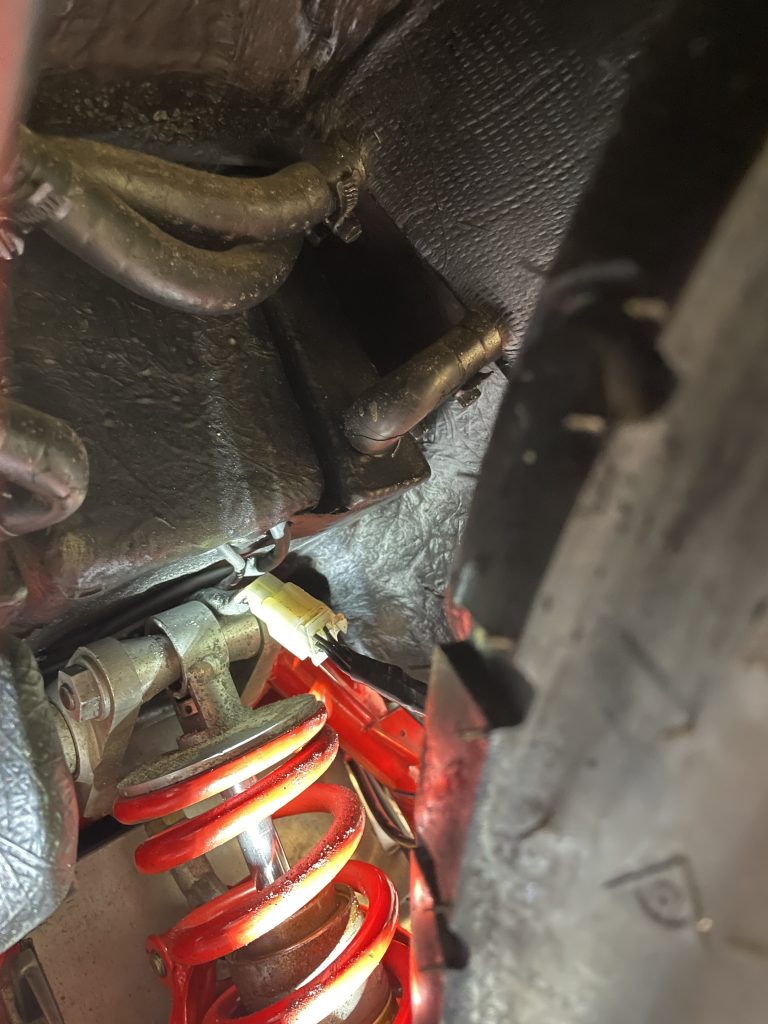
I recollect a posting I had seen on Facebook from fellow SB2 owner Peter, (which is why I made contact with him in the first instance), where he is telling someone about the bike that was at Galleria (this bike), saying his friend had bought it and that he thought it had a race history. That and the findings above brought this article below in particular to mind…
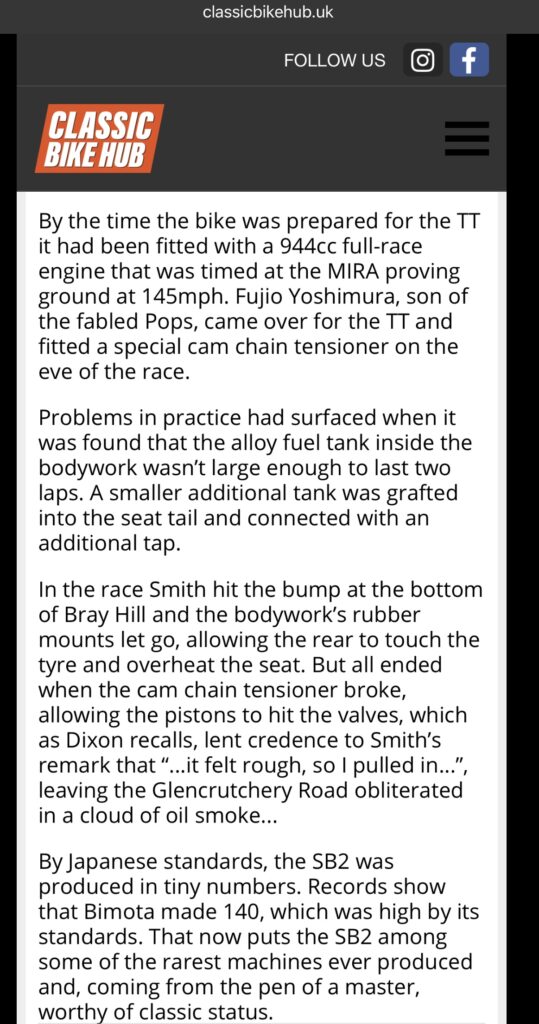
Could it be? There are a lot of coincidences there. Further investigation reveals a Lockhart oil cooler (for whom Dixon Racing where distributors for)…

And collapsed into the frame are the old rubber mounts for the seat unit.
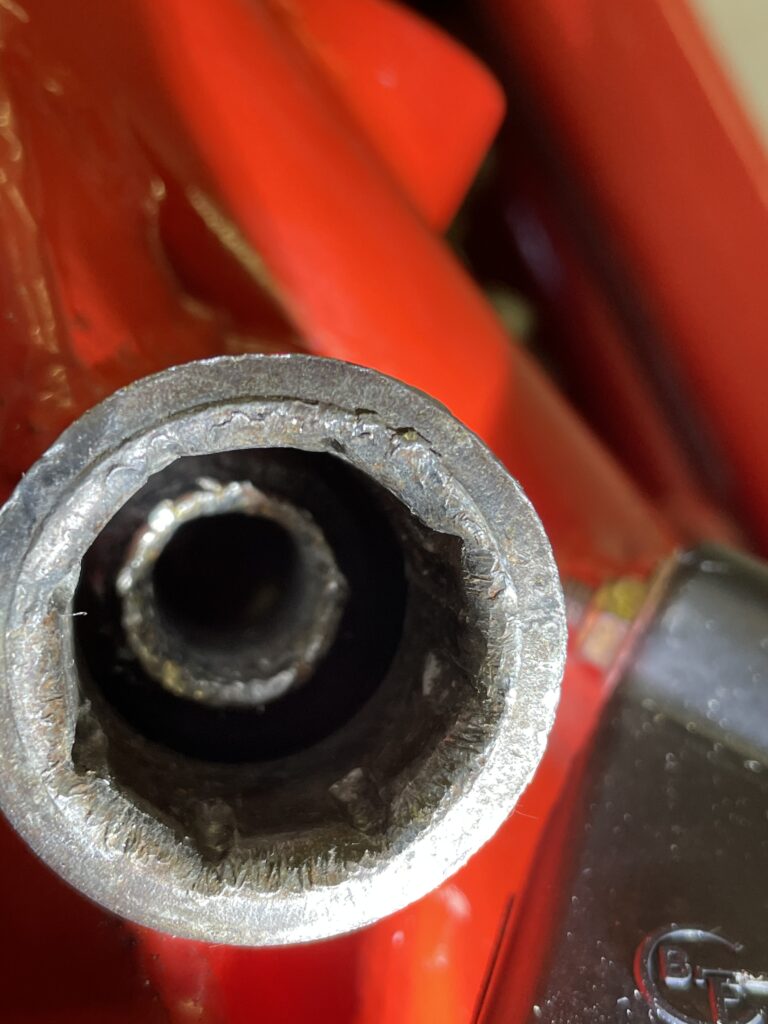
A makeshift rubber grommet set up has been glued to the tail instead to occupy the hole where the recessed rubber bush would have been.
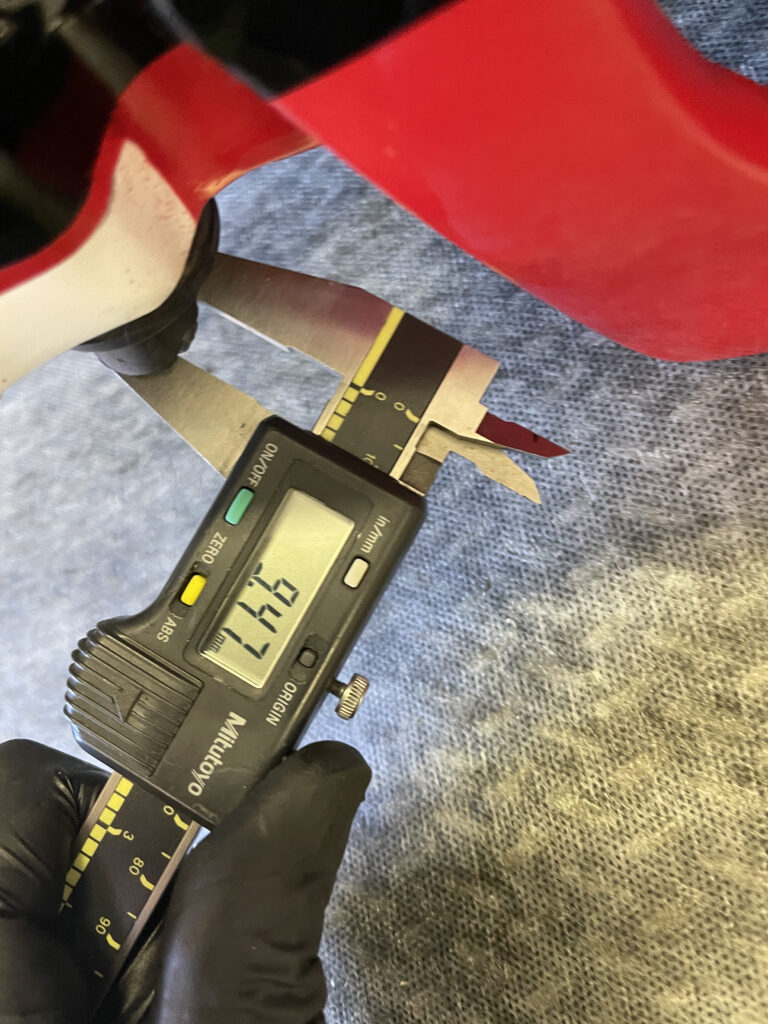
From the information I have gathered on the bikes history, I have an ex Dixon’s bike, bought by a classic vehicle restorer (sadly now deceased) who was told it had a race history. I have since found a trail of clues eerily matching a magazine article written in 1978 about none other than a Dixon Racing race Yoshimura Bimota Suzuki SB2 bike, campaigned by Bill Smith at the 1978 F1 TT no less.
My bike wasn’t registered for road use until 1993 which could mean that it was a race bike up to that point and possibly owned by a collector or just abandoned in the corner of someone’s workshop until it was finally road registered.
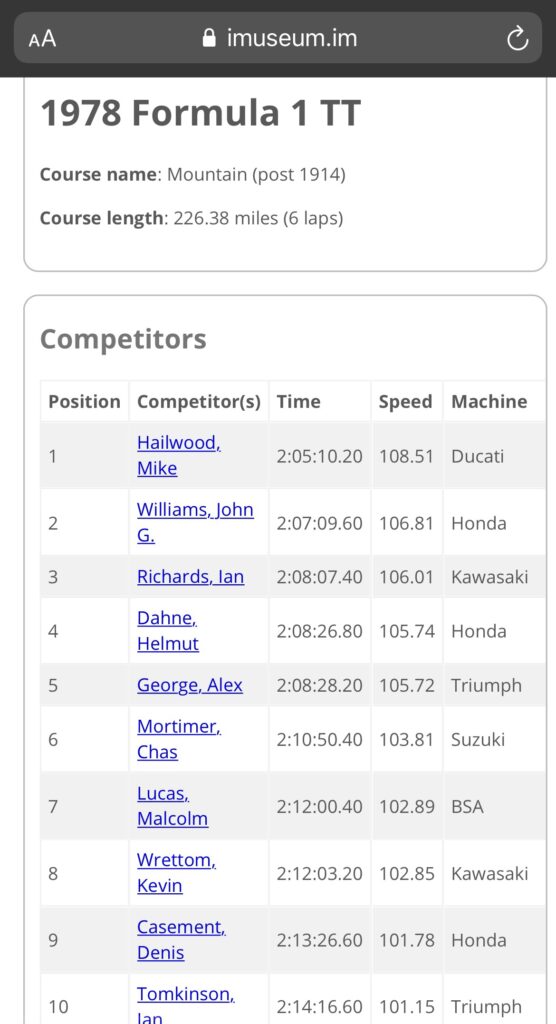
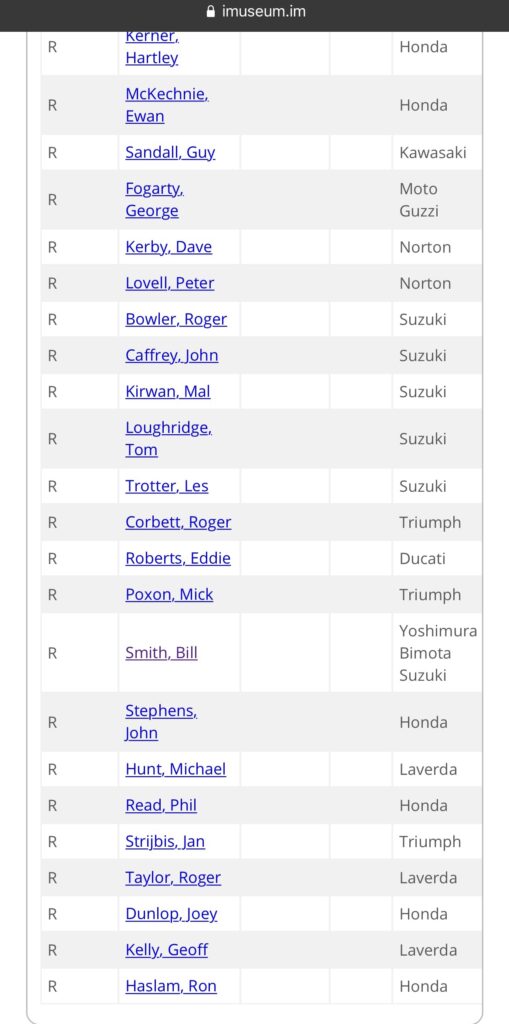
It’s a fanciful thought and I need to remain grounded, but it fires up a new line of enquiry. I make contact with Bill Smith Motors, which gets me through to Bill’s son Mark who now manages the business. He very kindly passes an email with information and photos on to his father. If anyone can verify the bike, Bill would surely be the man!!
In the meantime, I’m working through the clues with the ever helpful Peter, whose SB2 is away having some carb tuning work done. When he gets it back, he kindly sends me pictures of his bike. I see that he too has saddle tanks, virtually the same as mine in fact. He explains to me that they all have these saddle tanks beneath the tail, however they had a weakness in that they can crack due to flex and leak fuel. His did exactly this, therefore Tim (my bikes old owner), who restored Peter’s bike also, emulated the tank setup that was on his own bike. Peter’s tank was removed and custom ones fabricated from the template of the original. His new setup involved the main tank and two separate saddle tanks joined via flexible fuel hosing with balance pipes matching the arrangements on my bike. I guess having been used for racing, mine would have exposed this weakness fairly early on, hence the modifications that were carried out. Very usefully, Peter sent me photos of his original tank which would be fitted to all SB2’s and a drawing schematic of the factory setup;
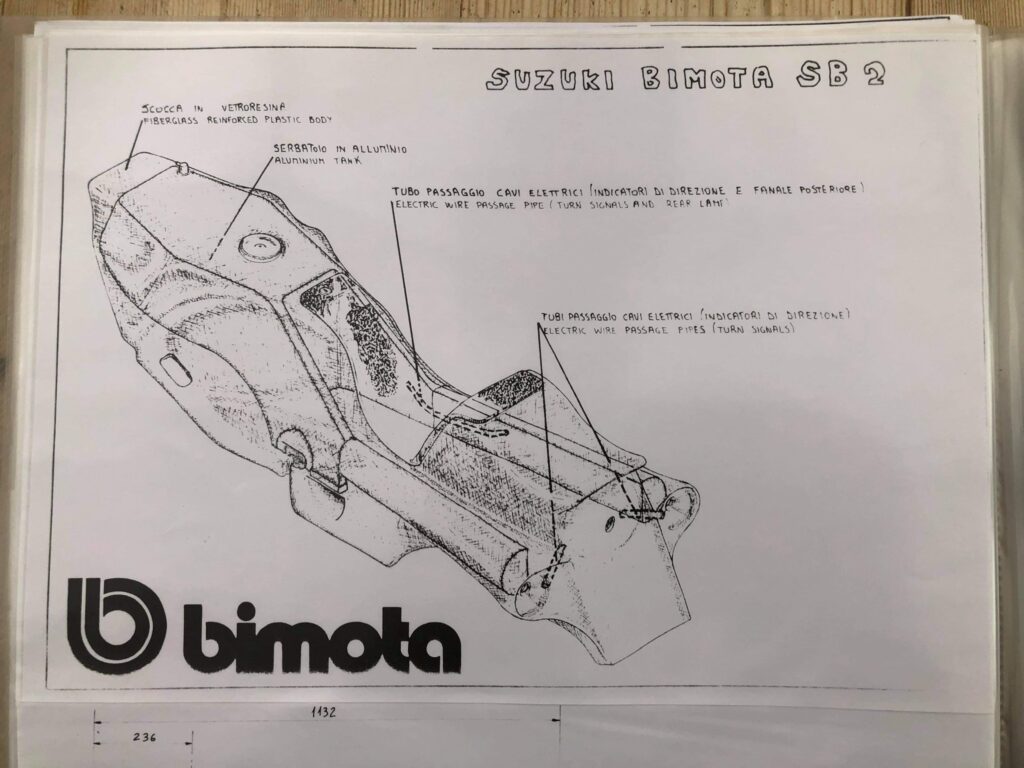
The above image shows the saddle tanks in the tail. Below is the original tank when de-bonded from the main fibreglass one piece unit. Interestingly, there are no balance pipes in the original setup and it is all one piece, not in three separate pieces as on mine and subsequently Peter’s bike.
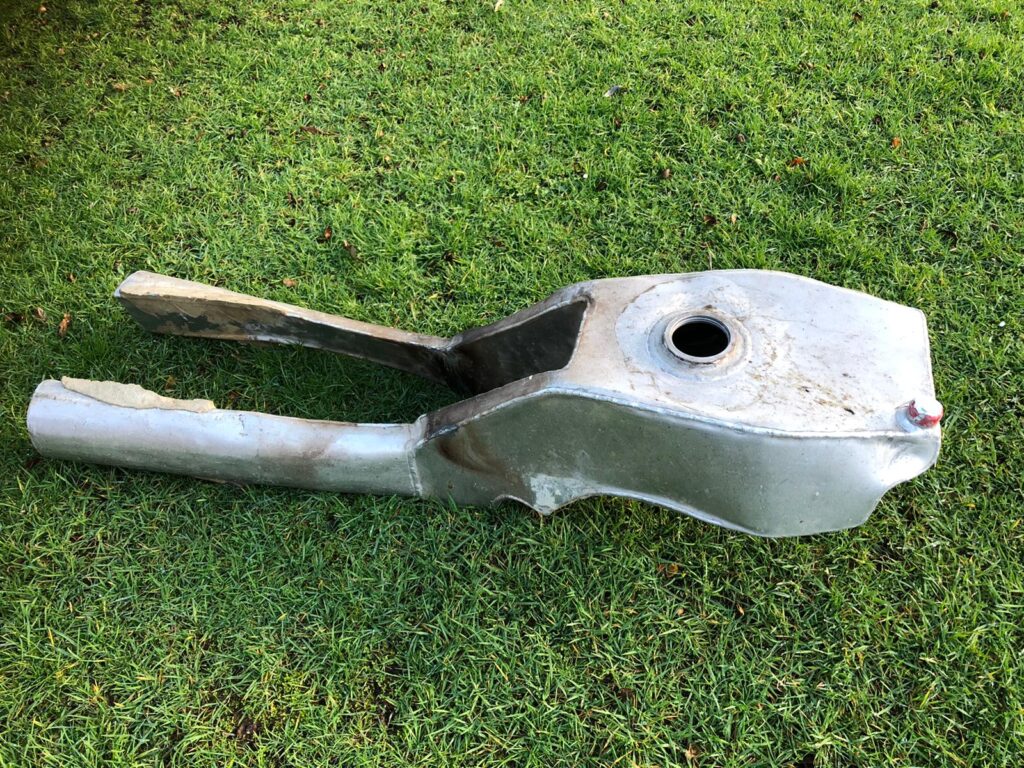
It transpires that the auxiliary tank that was referred to in the magazine article, wasn’t the saddle tanks under the tail, but an extra one perched on the rear of the motorcycle with what look like bungee hooks around it.
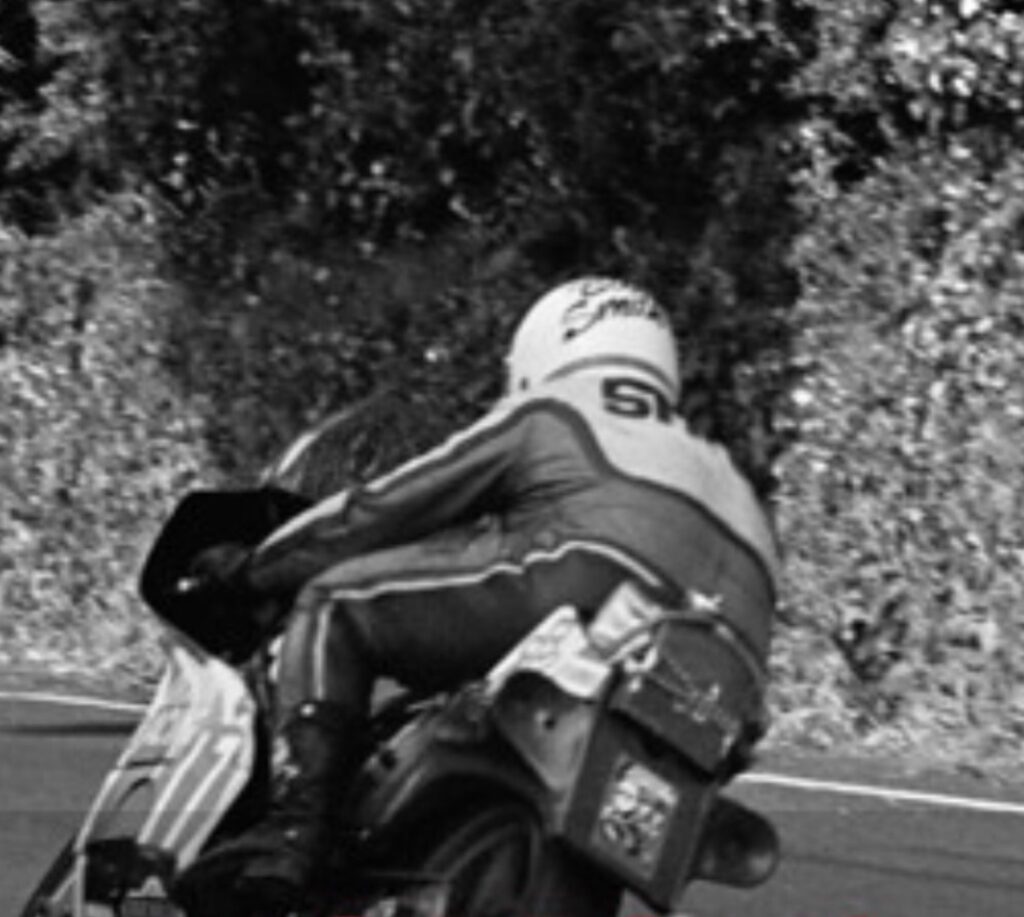
My rear tail looks like it has had a different lay up and been modified around the rear tail light area in the inside, with some ply also showing there, and the T piece on the balance pipe has a hose at the top coming off it which leads nowhere. It is almost too coincidental because this could well have been the feed pipe from the auxiliary tank into the saddle tanks and not a breather as I first thought since the main tank already has a breather and the fuel level in the main tank is at a higher point than this hose anyway. Since no one has done any mileage on this to speak of, it’s possibly just as well, since I could well imagine that if the tank were brimmed fuel would come out of this!
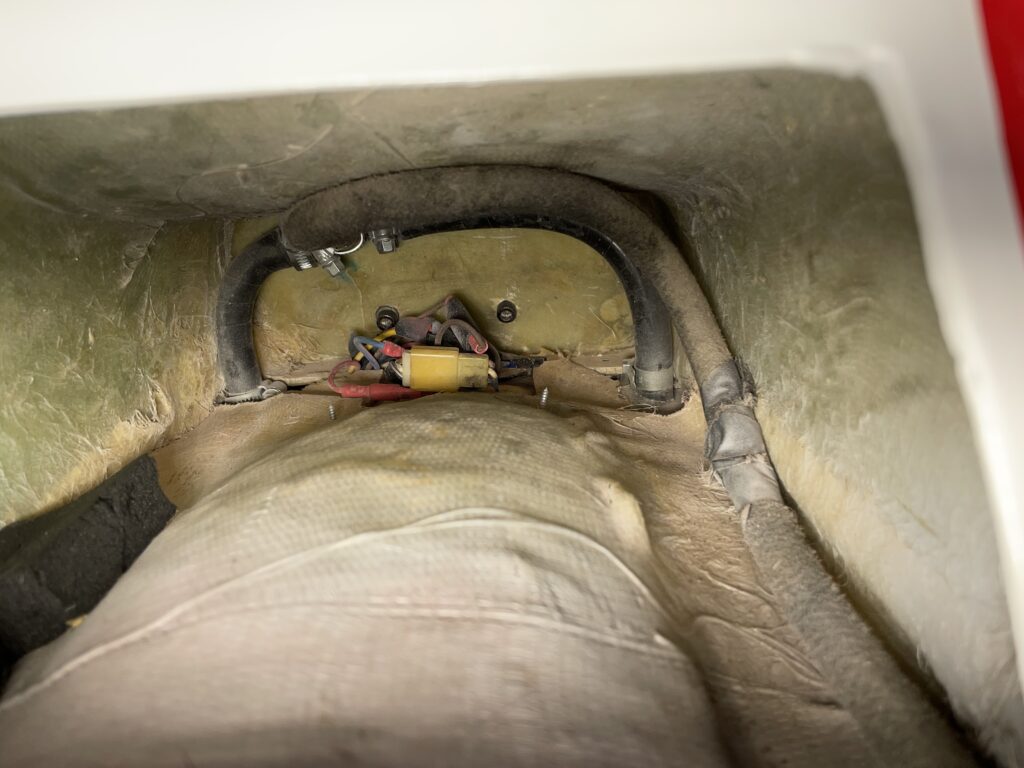
So my initial thoughts were somewhat misdirected in thinking the saddle tanks were the auxiliary ones from the article, however had it not been for me thinking that and remembering the magazine article, it would not have led to the further observations and comparison with other SB2’s. At least the recognition of the non factory looking split tanks and hose array led me closer to getting to the bottom of it all, learning an awful lot along the journey.
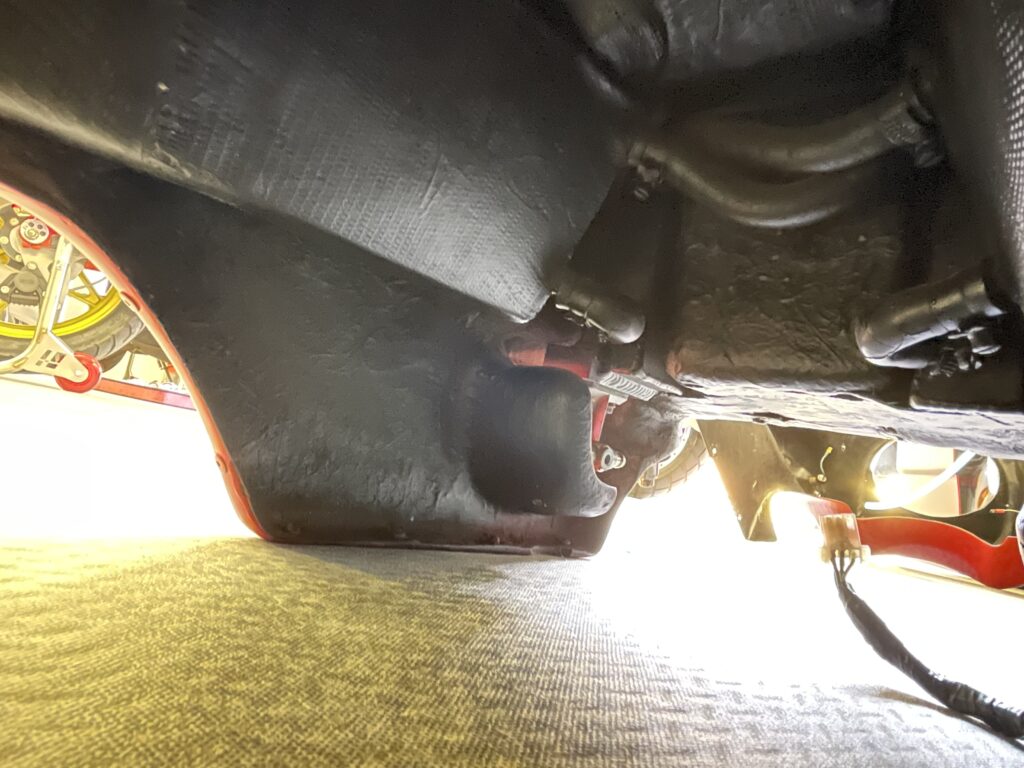
All that really remains now before I can get any further is for someone familiar with the bike at that time to verify the setup. With this having been 43 years ago it’s a very tall order.
